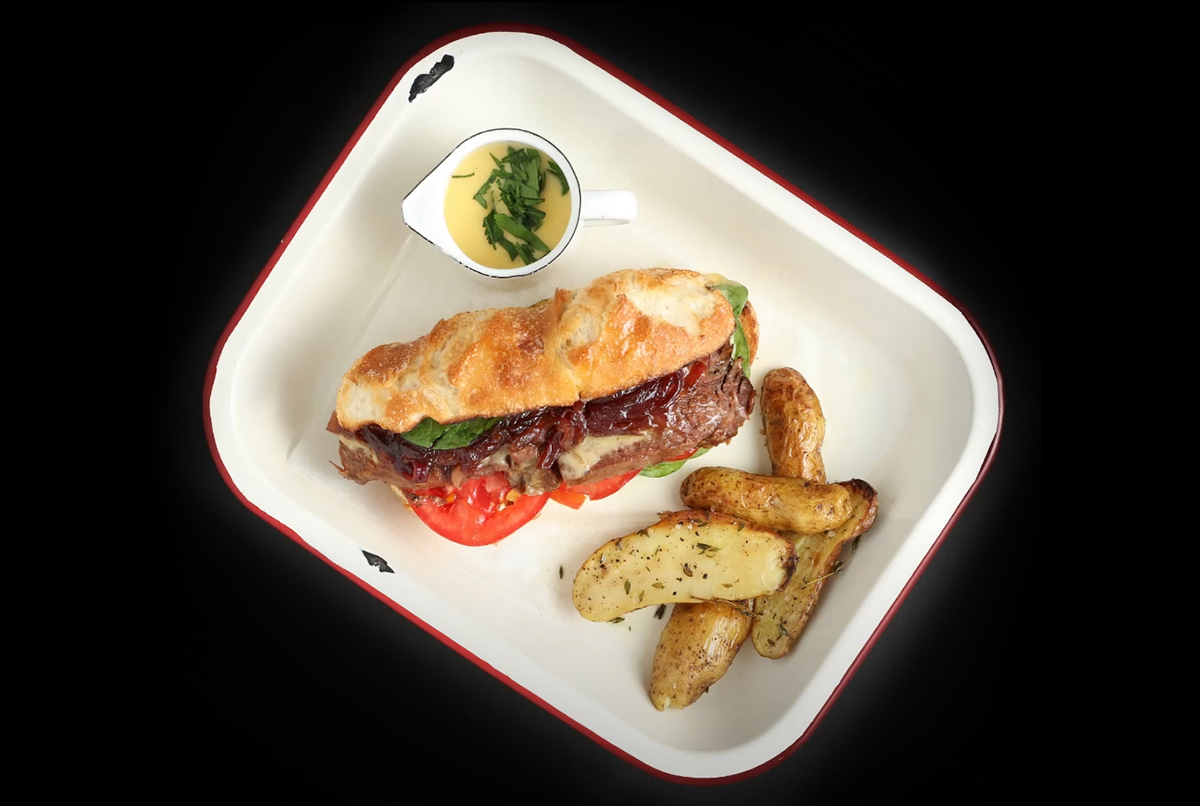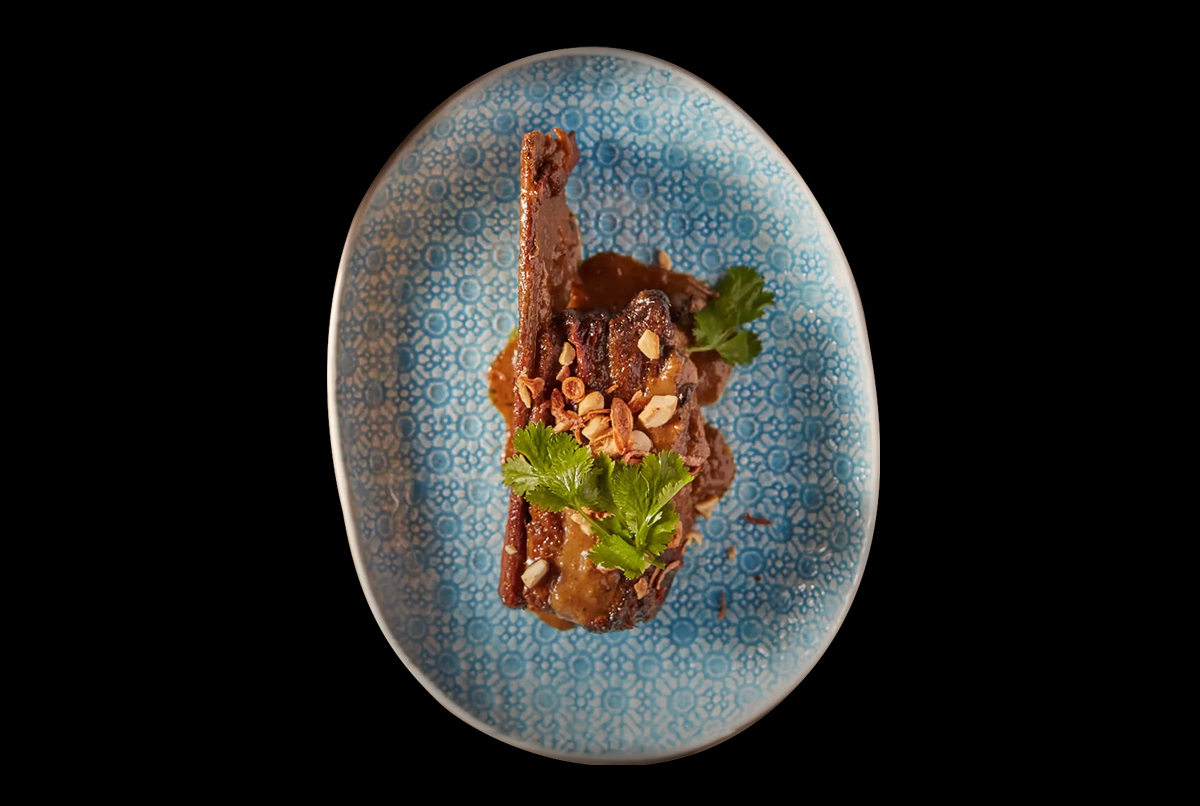To the casual observer, Flower Drum is about as classical as it gets. The carpet is red, the tablecloths are white, the dining rooms divided by lacquered screens. Some of the waiters give the impression they might’ve been working the floor for all of the restaurant’s nearly 50 years in business.
Flower Drum opened in 1975, and, apart from a move in 1985 from the original Little Bourke Street site to the current Market Lane address, for that casual observer, it has been a story of constancy and changelessness, its place at the pinnacle of Chinese dining in Australia secured by fine cooking and courtly service from a tight-knit and long-serving staff.
“We’re a traditional Cantonese restaurant working with the best Aussie produce we can find,” Says Jason Lui, the GM. “Our menu is quite broad; after 47 years you pick up a lot of things along the way, and we’ve still got regulars from 30 or even 40 years ago who still order the same thing, even if it’s not on the menu anymore. We still keep skewers in the kitchen in case someone comes in asking for satay.”
Flower Drum Menu
Glance at the written menu today and there’s everything you’d expect at the highest of high-end restaurants in Hong Kong: delicate dumplings in translucent gossamer wrappings, noodles dancing with the breath of the wok, soups of exceptional depth and clarity. You can have your rock lobster stir-fried with XO sauce and dried scallop, or whipped with egg whites and cream into an airy omelette. The Peking duck is one of Australia’s finest examples, served tableside on featherlight pancakes, and fried rice, crisp-skinned chicken and barbecue pork are all present and correct.
One of the more unusual dishes that it appears in is typhoon-shelter lamb. The typhoon-shelter style comes from the fishing community of Hong Kong, the name referencing the refuge they’d take during heavy weather. It’s traditionally used for seafood, typically tiger prawns or mantis shrimp stir-fried with a vast quantity of fried garlic, ginger, black bean, spring onion and chilli. At the Drum it’s reimagined as a way of presenting lamb cutlets. They’re dusted and lightly fried together with a relatively restrained quantity of garlic chips and chilli: spicy, crunchy, delicious.
"Typhoon Shelter Lamb Cutlets – traditionally made with seafood, at Flower Drum the dish highlights the quality of Australian lamb"
“Southern Chinese people have a perception that lamb is very … lamby,” says Jason.
One of the secret weapons of the Flower Drum kitchen in winning southern Chinese diners over to Team Lamb comes as something of a surprise. “We use fish stock,” says Jason. “Instead of chicken or beef or whatever, we use a stock made from all the pieces left from filleting all our fish, and we use that as the base to braise the lamb. My dad came across that because in Chinese somehow the word ‘lamb’ has the word water or sea in it, and thought he’d give it a try – it takes away some of that lambiness. We’ve been doing that for 10 years now, and it works for us. It sells.”
"Braised Lamb Claypot – saltbush lamb brisket slow braised on the bone"
On the beef side of the ledger, short-ribs do the occasional cameo, braised then battered and fried, as does wagyu cheek, and Black Angus appears in the form of a fillet stir-fried with a superior-soy mix, stir-fried with mushrooms. Westlake beef soup is standard, bringing together chopped Black Angus, coriander and spring onion, all thickened with egg white, and there’s also a pao fan, a variation for the colder months, that’s like a loose congee made up of rice cooked in a clear broth with, coriander, not-quite minced beef and topped tableside with a crisp rice.
Flower Drum is famed for the breadth of its off-menu offering – most of the real regulars verbal their whole order without ever cracking the pages of the carte. But even so, learning that the Drum does a steak still comes as something of a shock. Will it be Black Angus eye fillet or Robbins Island wagyu porterhouse? “We do those with black pepper sauce or our Sichuan sauce,” Jason says. It’s more usual for these cuts to be sliced into strips before they’re cooked here, of course, as you would in any restaurant where chopsticks are the weapons of choice at the table, but the Drum also has guests who prefer it as a steak, and, this being a can-do sort of place, they’re always happy to serve them. “We’ve got seeded mustard here if you want it.”
The techniques we use are still very traditional, they work for a reason,” Jason says, “but we have a bit of fun playing around with things and doing things differently with certain dishes. Even our spring onion cake we do with puff pastry rather than the usual pancake – you can’t just do the same thing all the time.”
"Jason Lui says the key to return diners is to overwhelm them with service, attention to detail and exceptional food"
What will Jason be doing this Lunar New Year?
“New Year’s Eve is mostly Chinese diners, and it’s booked out a year in advance, and it’s the same families coming back year after year, booking 12 or 20 or 50 people. Every year it’s the same people. New Year’s Day is more of a mix, but it’s booking out well in advance now too.”


